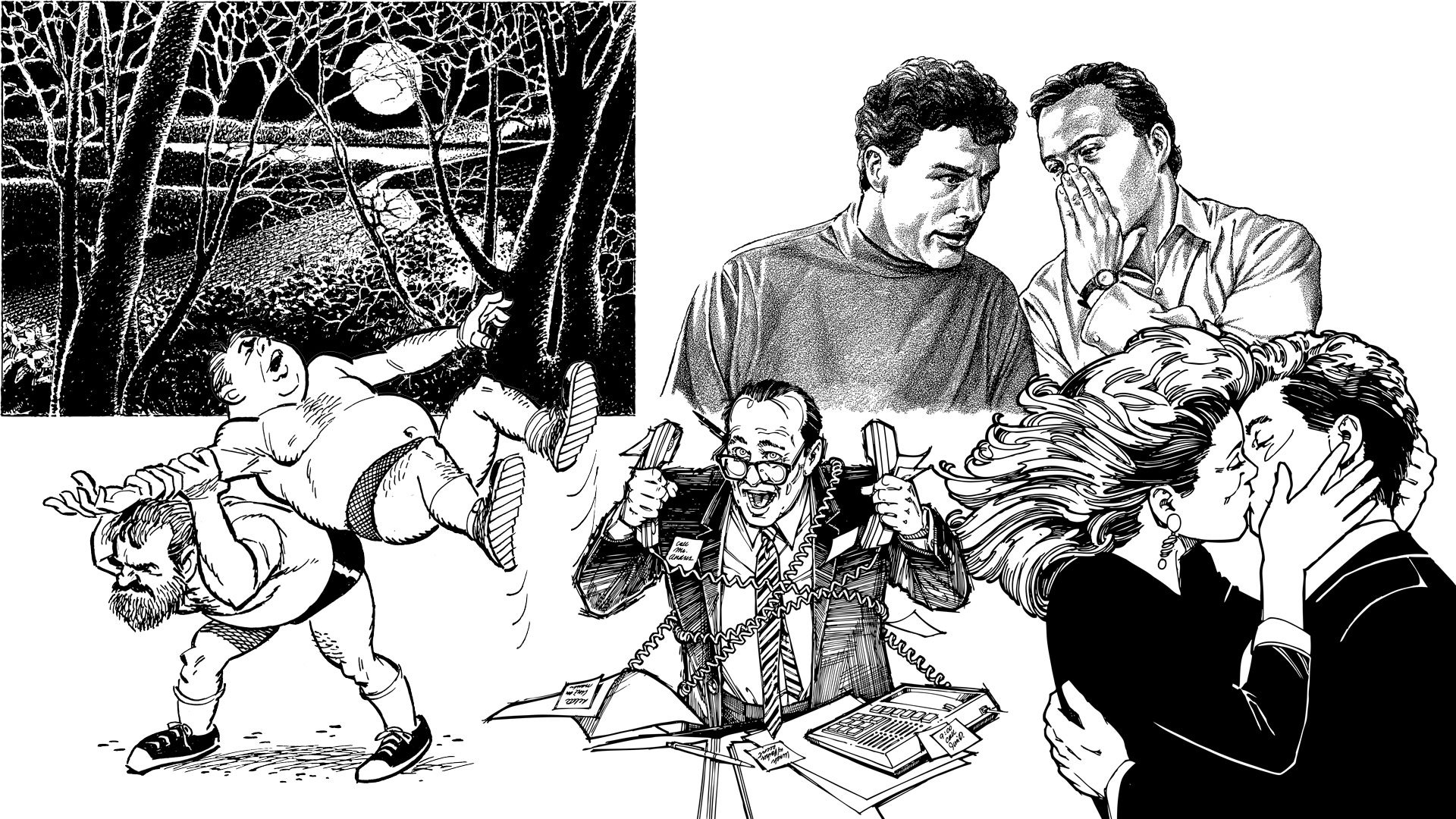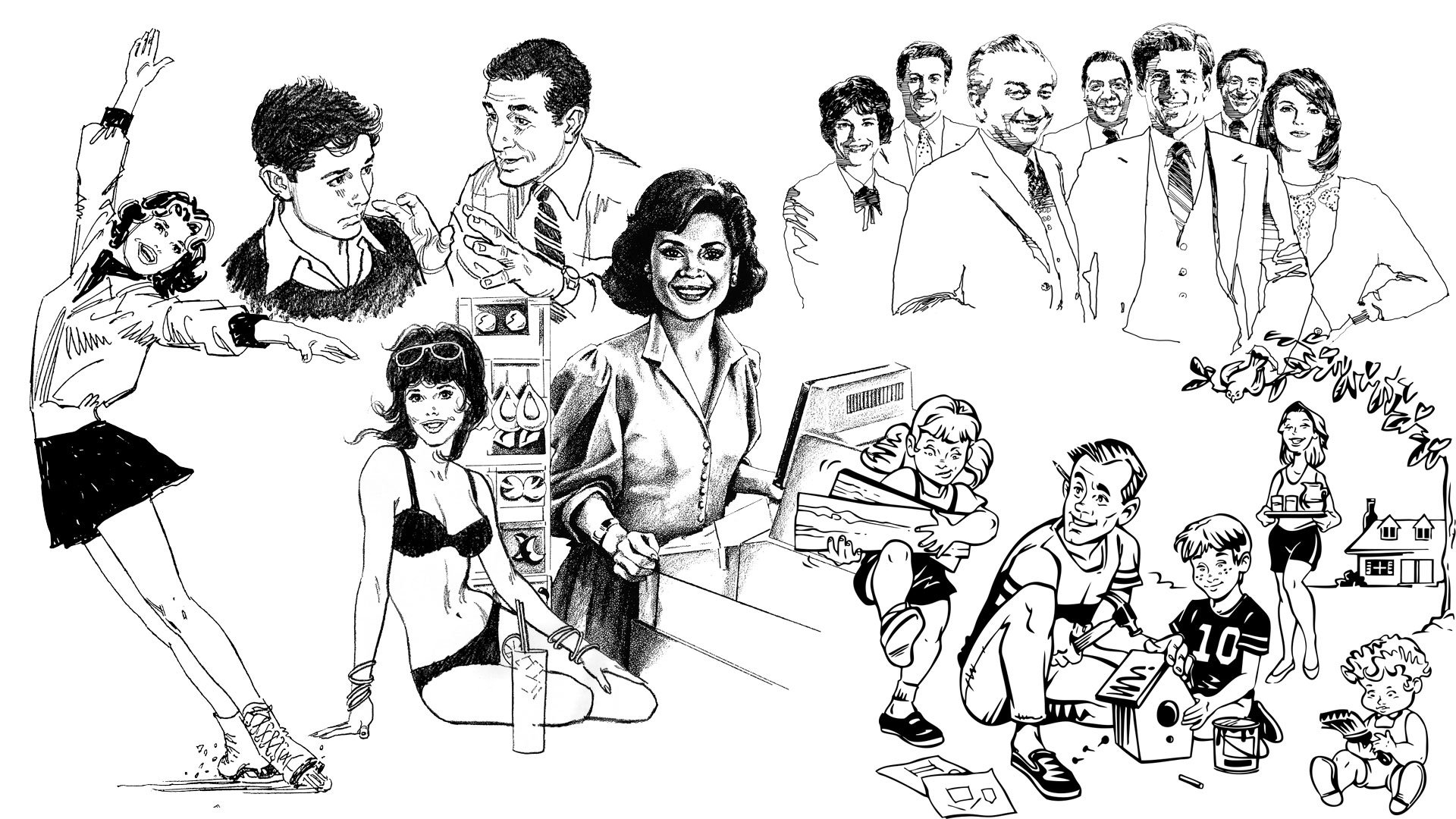It’s 1995, and a teenage me (Hi! I’m Dave!) is up against the proverbial wall as my senior year of high school begins and I have absolutely no idea what the future holds for me. I have zero direction or ambition to know where I’ll go to further my education (if at all), I’m not even sure what I want to do in a best case scenario, and the bad news is there isn’t a best case scenario anyway because I may not even have enough credits to graduate with the rest of my class. My dad is getting frustrated because all I ever say that I want to do is draw, but how that translates into any kind of career is spectacularly vague and naive at best. Seemingly moments before the first day of school even starts, I’m enrolled in Monmouth County, New Jersey’s stellar vocational education program at the zero hour where my father finds a commercial art class which will give me a far better chance at achieving the necessary math and science credits I’ll need to get a high school diploma. The vocation curriculum is technically two years, meaning I’ll only complete the first and my fellow classmates will all be juniors, but there’s no time to split hairs. As far as Dad, the state of New Jersey, and any future higher education prospects are concerned, the name of the game is to simply graduate Neptune High School with a modest GPA.
Me and my fellow MCV classmates, 1996
If you know me or have read any other blog post here, you know that it all worked out. But I’m not actually writing about my time with the Monmouth County Vocational Commercial Art School in Aberdeen, nor how that class arguably saved my future career, how I made some great friends, or how we all relentlessly tortured our teacher Ms. Camp (I’m so sorry for all those headaches Ms. Camp! We all genuinely love you!), but rather how I discovered an art form that continues to inspire me to this day, the world of Volk Clip Art.
First let’s take a quick crash course through the history of what clip art actually is. As I mentioned when I wrote about stock image sites, designers are busy people, and may not always have the time or ability or money to cultivate graphics and images for their projects, so they turn to other methods by relying on pre–made works with varying licensing managements. Clip art specifically covers illustrated pieces for publishing products that offer a huge variety of content and illustrative styles. The term clip art comes from physically cutting images from printed works and pasting them into new publishing projects with type and/or other graphics. This would be done by a layout artist, mechanical artist, or production artist on a printing press back in the day. Thanks to desktop publishing though, we’ve condensed all that down to the noble graphic designer.
Now there’s a lot more to cover, but for brevity’s sake we’re just going to hit some bullet points here. Many publications and smaller businesses didn’t have the budget to hire illustrators, so clip art became a mainstay for consumption. I’m going to briefly skip over the main course of today’s post for a minute here, but eventually the ink–based, comic book style of clip art that I’m referencing today became dated, but not useless. So sometime in the 1970s, those higher quality, older designed and stylized clip art made it’s way into trade paperback books for the masses. At that point, all you needed was a collection of (mostly) public domain illustrations and a Xerox machine, and now anyone could create relatively high quality designs. Flash forward to today, and you can very easily get your hands on quality, royalty free clip art from a variety of online locations for dirt cheap or even free. In fact, a lot of those cool, vintage illustrations that we’ll be talking about in a second are even archived on sites like Flickr!
Back to 1995 and a young and green Dave is confronted with a fantastic collection of clip art and unlimited Xerox privileges. It’s at this point where we finally get to the meat of this post and the very specific art house that was arguably the titan of clip art: Volk. I’ve mentioned a few times before that even if you’ve never heard of a certain so–and–so, their work probably crossed your path. Unless you’ve been living under a rock and outside of the United States (and even then there’s an excellent chance), you have most definitely seen something from a Volk catalog. Ironically located just 84 miles south from my former vocational school, Harry Volk, Jr.—a former journalist—opened his art studio in Pleasantville, New Jersey in the mid 1950s that pumped out high quality, copyright free, clip art in saddle stitched paper booklets. These collections were organized into various themes that covered absolutely everything from popular holidays, space exploration, school activities, sales gimmicks, various occupations, elections, travel, and practically everything in between. Each booklet would cost just a few dollars and would be packed with fantastic, high quality illustrations that simultaneously reflected American values and societal changes surrounding race & gender, all at the same time somehow maintaining a specific but generic look.
The superstar of Volk was a man named Tom Sawyer. Yes, I know, but trust me, his name is the least intriguing thing about him. Thomas B. Sawyer’s work for Volk was ubiquitous, seen internationally in magazines, newspapers, pamphlets, sign boards, and on television. Mr. Sawyer isn’t just a top notch illustrator though. He’s a best selling novelist, author, screenwriter, playwright, producer, and story editor; but his biggest claim to fame was as the head writer and show runner for the classic CBS series Murder, She Wrote starring Angela Lansbury. I reached out to Mr. Sawyer for an interview seeing as his book, The Adventures of the Real Tom Sawyer shares the same publisher (Bear Mountain Media) as Sam and Friends – The Story of Jim Henson’s First Television Show by Craig Shemin, but I never heard back from him.
But Tom Sawyer was just one of the illustrators working for Volk. The vast collections of notable mid–century style drawings from Volk’s studio are exceptional. The weird thing is how little information there is anywhere about those other illustrators or even Harry Volk, Jr. himself! Seriously, there is almost nothing about him, his studio, or its employees other than Thomas Sawyer online. This blog post will hopefully garner him a few more fans. Perhaps one day I’ll even make the pilgrimage to his old studio!
Roughly a decade or so ago, I was helping a client/friend/coworker of mine who was working as the head preservationist, curator, and director of The Salvation Army’s Eastern Territory Heritage Museum when she presented me with a huge collection of Volk clip art, not only well preserved, but still in its plastic organizing case—an even rarer find than the art contained within! Opening that case (even still) is like a time machine, not only transporting me back to the essence of 1950s & 60s design, but even more specifically to Ms. Camp’s Commercial Art class to a host of Gen X teenagers irresponsibly taking advantage of the school’s copy machine and trying to get high off sniffing Krylon far away from the designated ventilation booth. Initially, that institutional green colored box was bound for the trash, but she gave it to me (a million thank you’s again, Kathy!).
Most of my collection is from the 70s through 90s
Ironically, this tale shares a much bigger, real world counterpart to publicly available clip art from Volk and other studios as well. A New York Times employee named Bart Solenthaler who worked in the advertising department was tasked with throwing away a massive collection of clip art, but instead took the time to scan and upload it to Flickr! You should absolutely check that collection out here.
Did you ever use clip art from Volk? All the images in this post are from my personal collection which are primarily from catalogs from the 80s and 90s, so they don’t reflect that cool mid–century style I’ve been talking about. However, you can find even more classic Volk clip art here. If you’d like to learn a little more detail about this type of clip art, check out my sources by visiting this article on Tedium and this one on Fast Company. For more vintage design inspiration, check out this article I wrote about my classic magazine collection.
Follow me on Instagram and Twitter and check back here on Fridays for more creative thinking and inspiration!



















